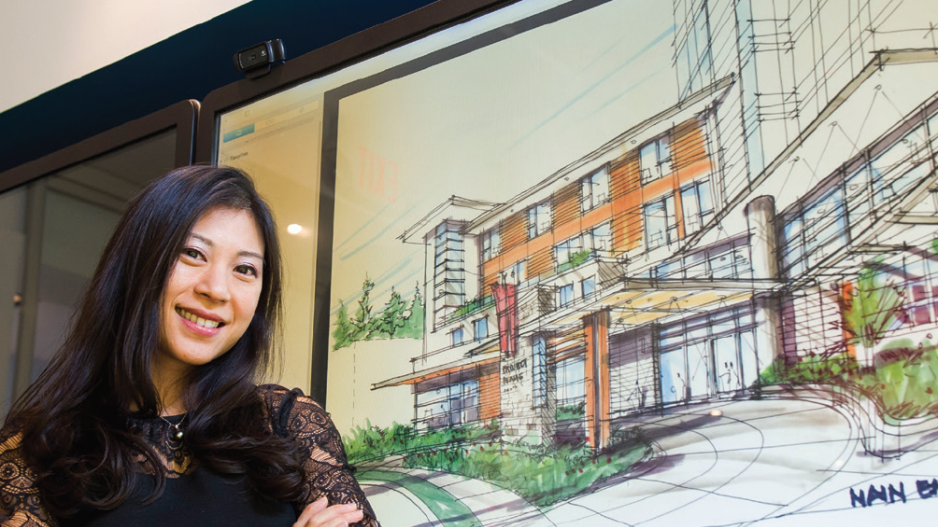As our physical and mental capacities diminish with age, we typically look to home care or government senior residences. But what happens in the case of a couple that have different needs? What happens when public wait-lists are too long? Or if someone is not old enough to qualify for government beds?
The challenges of aging care needs are more complex than many realize.
“The current residential health-care system is very rigid,” says Connie Jorsvik, independent patient advocate and owner of Patient Pathways. “Eligibility criteria for residential care is extremely high due to the critical lack of beds, and then the wait can put tremendous strain on families as they juggle the needs of aging parents with their careers and raising their own children.”
Independent or assisted living is often not an answer, says Jorsvik, as it can be exorbitantly expensive and care is often limited, forcing families to bring in outside caregivers at an additional, massive cost.
“Families often want to be involved in the care of their aging parents but the current scenario doesn’t allow that choice – it’s all or none,” she says. “An opportunity for families to stay together and also get the support they need would be a beneficial alternative to the current all-or-none scenario.”
The challenge has resulted in a new approach to senior living – where residents can buy or rent modern, well-appointed suites; where children can live with their parents; where services are opt-in on an as-needed basis; and where the minimum age is not 65.
An example of this flexible approach – and currently the only one of its kind in Canada – is Opal by Element. Located on King Edward near Cambie, Opal requires that only one family member in a suite be 55 or older, thus allowing family members from different generations to live together.
Opal is expected to be completed by February 2019 and will have 44 residential condominium units, 56 rental units and 30 complex-care units.
“We take a unique philosophy working with municipalities in terms of their age covenant and bylaws to provide the support and the care that’s not age-restricted in the traditional sense,” says Candy Ho, vice-president, marketing and corporate relations, Element Lifestyle Retirement. “Families can live together or seniors can have direct interaction on a daily basis with much younger people and not be surrounded by suffering and degeneration.”
This solution satisfies those who don’t like the stigma of moving into a “seniors’ home” and are trying to stay at home even when their health deteriorates, says Ho. “These people stay at home and they wait too long until they need care and then scramble around trying to find the support and care because there’s just not enough of it out there.
“You can try to get care at home, but you’ll only get two hours a week through government services,” says Ho, speaking from the experience she had with her late father-in-law, who had Parkinson’s and Alzheimer’s.
“Then the whole family becomes caregivers,” says Ho, adding that sometimes it’s the children who have special needs. “Anybody can need care at any stage of life.”
As an example, she says, there are parents with autistic children who are looking into her facility.
Douglas Guest, 38, bought at Opal for himself and his mother, Michele, 72. His father had lived at home with dementia. His family took care of him and had the idea of building a laneway house to enable his children to be around his father, but they didn’t get the laneway house built in time.
His father died at home at 88.
Anticipating his mother’s needs and seeing the long wait-lists for government residences, he started to look for options.
“You could have assisted living, but if you needed extra care for something like dementia, there wasn’t any room for another caregiver; and other places were more like hospitals.”
Guest decided to buy into Opal as an option for himself and his wife when they get closer to retirement. Until then, he believes his mother will move into one of the 1,100-square-foot suites he purchased, and his in-laws will move into the other.
Mike Chiu, a commercial mortgage broker specializing in seniors’ housing, sees projects like Opal offering solutions for many seniors’ housing challenges.
“Government has not been keeping up with demand for the 75-plus population so what we’re seeing is more private-sector involvement,” says Chiu, who is a commercial member of the BC Seniors Living Association and BC Care Providers Association.
“When a senior buys a unit rather than stay at home on a wait-list, they take themselves out of the public system. You’re one less person on a wait-list for funded long-term care.”
From a financial standpoint, lots of properties offer rentals, but being able to buy a condo means seniors don’t have to deplete their equity as they would in a high-end rental, explains Chiu.
“There’s also a wider array of new housing types entering the market, and that’s where Element and the Opal is unique,” says Chiu. “Rather than doing pure independing living and meals or pure care, they’re saying, ‘We can do it all.’”




